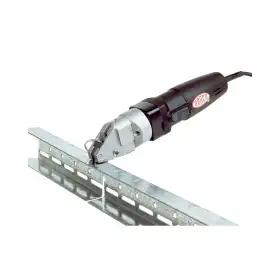Power Shears: A Comprehensive Guide to Sheet Metal Shears and Their Applications

ext-6594401.livejournal.com/1319.html
Power shears and sheet metal shears are essential tools for anyone working with metal fabrication or construction. These tools provide precise cutting capabilities that significantly increase efficiency and improve the quality of cuts compared to manual alternatives. Whether for small DIY projects or large industrial tasks, understanding their differences and applications can help users select the right tool for their needs.
Power shears are electric or battery-operated tools designed to cut through various materials, including metal sheets and other tough substances, with ease. Sheet metal shears, on the other hand, are typically manual or pneumatic tools that excel in delivering straight cuts in thin sheets. Knowing when to use each type can spare users from unnecessary effort and material waste.
By exploring the features, advantages, and best use cases for both power shears and sheet metal shears, individuals can make informed decisions that enhance their crafting or construction projects. Understanding these tools not only aids in selecting the right equipment but also ensures optimal performance and safety during use.

Overview of Power Shears and Sheet Metal Shears
Power shears and sheet metal shears are essential tools in metalworking and construction, providing precision in cutting various materials. Their design and functionality cater to a range of applications, making them valuable for both professionals and DIY enthusiasts.
Types of Power Shears
Power shears come in various types, each designed for specific cutting tasks. The most common types include:
Electric Power Shears: These are powered by electricity and are ideal for cutting thick metal sheets quickly. They offer consistent performance and require minimal manual effort.
Pneumatic Shears: Utilizing compressed air, these shears are lightweight and efficient for continuous use, making them suitable for industrial environments.
Cordless Shears: Battery-operated models provide portability and flexibility, allowing users to cut metal sheets in remote locations without being tethered to a power source.
Each type offers unique advantages, making them suitable for different projects and user needs.
Sheet Metal Shears Design
Sheet metal shears feature a robust and ergonomic design that facilitates ease of use. Common designs include:
Straight Cut Shears: Designed for making long straight cuts, these shears are often used for typical sheet metal applications.
Nibbling Shears: Ideal for making intricate cuts and designs, nibbling shears remove small amounts of material as they cut.
Compound Shears: These utilize leverage, allowing users to cut through thicker materials with less effort.
The materials used in construction typically include stainless steel or high-carbon steel blades, which enhance durability and cutting efficiency.
Materials and Applications
Power shears and sheet metal shears can cut a variety of materials. Common materials include:
Steel: Frequently used in construction and manufacturing, power shears effectively cut through different steel gauges.
Aluminum: Lightweight and easy to cut, aluminum sheets benefit from both power and manual shears for various applications.
Copper and Brass: Shears can easily slice through these softer metals, used in plumbing and electrical applications.
Applications span across industries. From automotive fabrication to HVAC installations, precise cutting enhances overall work quality and efficiency
Operating Power Shears
Proper operation of power shears involves adhering to safety procedures, maintaining the equipment effectively, and employing common operational techniques to achieve desired results. Understanding these elements is crucial for both efficiency and safety in the workplace.
Safety Procedures
Wearing appropriate personal protective equipment (PPE) is essential when operating power shears. Operators should don gloves, safety glasses, and hearing protection to prevent injuries.
Ensuring the work area is clean and well-lit helps to avoid accidents. Keep all tools and materials organized to minimize the risk of tripping or misplacing equipment.
Before operation, operators should inspect the shears for any visible damage or wear. Verify that all safety features are functioning correctly. Following manufacturer guidelines for operation and maintenance is critical for maximizing safety and avoiding malfunctions.
Maintenance Best Practices
Regular maintenance is vital for the longevity and efficiency of power shears. Operators should clean the shear blades after each use to remove any debris or buildup.
Lubricate moving parts according to the manufacturer's schedule. This prevents wear and tear and maintains smooth operation.
Operators should check blades for sharpness at regular intervals. Dull blades can lead to inefficient cuts and increase the risk of accidents.
Lastly, keep power cords and connections secured and free from damage to avoid electrical hazards.
Common Operational Techniques
When using power shears, it’s important to hold materials securely to prevent movement during cutting. Employ clamps or vises to stabilize the workpiece.
Using steady pressure on the trigger allows for consistent cutting speed. Operators should practice techniques for initiating cuts and smoothly guiding the shears through the material.
For thicker materials, operators may need to adjust the cutting speed and approach to prevent stalling. Understanding the specific capabilities of the power shear model in use is important for achieving optimal results and extending the tool's lifespan.
